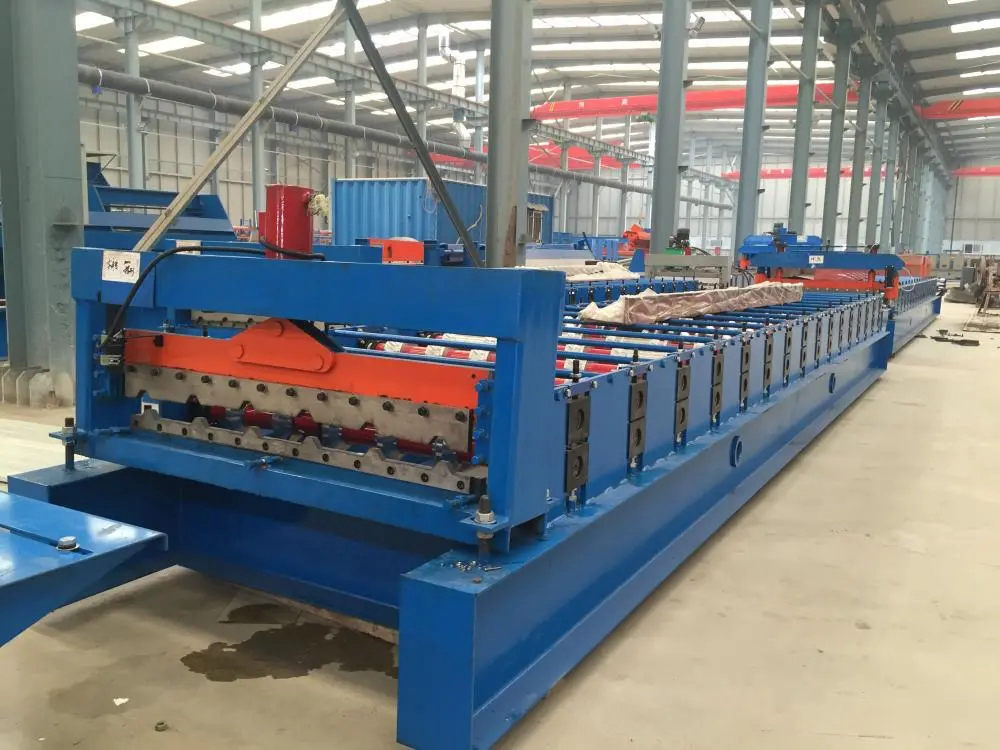
Understanding Changeable C Purlin Roll Forming Machines
In the realm of modern manufacturing, the versatility and efficiency of machinery play a crucial role in meeting the demands of construction and industrial applications. Among these essential machines is the changeable C purlin roll forming machine, a specialized piece of equipment designed to produce C-shaped purlins with a high degree of precision and flexibility. This article will delve into the features, benefits, and applications of changeable C purlin roll forming machines.
What is a Changeable C Purlin Roll Forming Machine?
A C purlin is a structural component commonly used in steel buildings for supporting roofs and walls. The roll forming machine, designed to create these purlins, operates by continuously feeding steel coils into a series of rollers that shape the metal into the desired profile. The term “changeable” refers to the machine’s capability to produce different sizes or dimensions of C purlins without requiring extensive reconfiguration, making it an excellent investment for manufacturers looking to diversify their product offerings.
Features of Changeable C Purlin Roll Forming Machines
1. Adjustable Roller System One of the standout features of a changeable C purlin roll forming machine is its adjustable roller system. This feature allows operators to modify the spacing and configuration of the rollers, enabling the machine to produce various sizes and thicknesses of C purlins efficiently. This adjustability supports a wide range of applications, making the machine versatile and valuable for producers.
2. High Production Efficiency These machines are engineered for high-speed operation. By utilizing advanced technology and automation, they can significantly reduce manufacturing lead times. This efficiency is crucial in today’s fast-paced construction industry, where timely delivery can impact project success.
3. User-Friendly Control System Modern changeable C purlin roll forming machines come equipped with sophisticated control systems that simplify the operation. With intuitive interfaces, operators can easily switch between different purlin specifications, quickly adjust settings, and monitor production processes in real-time.

4. Durable Construction Given that roll forming processes involve the continuous bending of metal, robust construction is essential. Changeable C purlin roll forming machines are built using high-quality materials designed to withstand operational stresses, ensuring long service life and reliability.
Benefits of Using Changeable C Purlin Roll Forming Machines
The primary advantage of implementing changeable C purlin roll forming machines in manufacturing processes is their flexibility. As market demands fluctuate, manufacturers can quickly adapt their production lines to accommodate different purlin specifications without significant downtime or retooling costs.
Another benefit is waste reduction. Precise tooling and advanced control systems minimize material wastage during production, promoting efficient use of resources. Cost savings from lower material waste, along with enhanced production efficiency, significantly impact the overall profitability of manufacturing operations.
Additionally, the ability to produce customized purlins on demand allows manufacturers to better serve their customers’ needs. Customization is increasingly important in construction projects, where specific sizes and designs are often required.
Applications of Changeable C Purlin Roll Forming Machines
Changeable C purlin roll forming machines have widespread applications in various sectors, including residential, commercial, and industrial construction. They are predominantly used in the manufacturing of steel structures, such as warehouses, factories, and commercial buildings. Additionally, these machines are valuable in creating frameworks for solar panel installations, providing the necessary support systems for renewable energy projects.
In conclusion, changeable C purlin roll forming machines represent a significant advancement in metal fabrication technology. Their ability to efficiently produce various sizes of C purlins with minimal downtime and waste not only enhances productivity but also strengthens the competitive edge of manufacturers in the construction industry. As the demand for customizable and efficient structural components continues to rise, these machines are likely to play an even larger role in the future of construction and industrial applications.